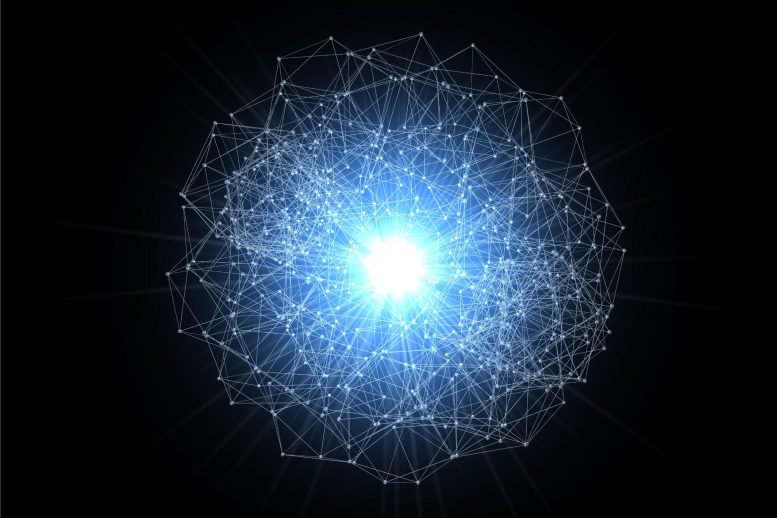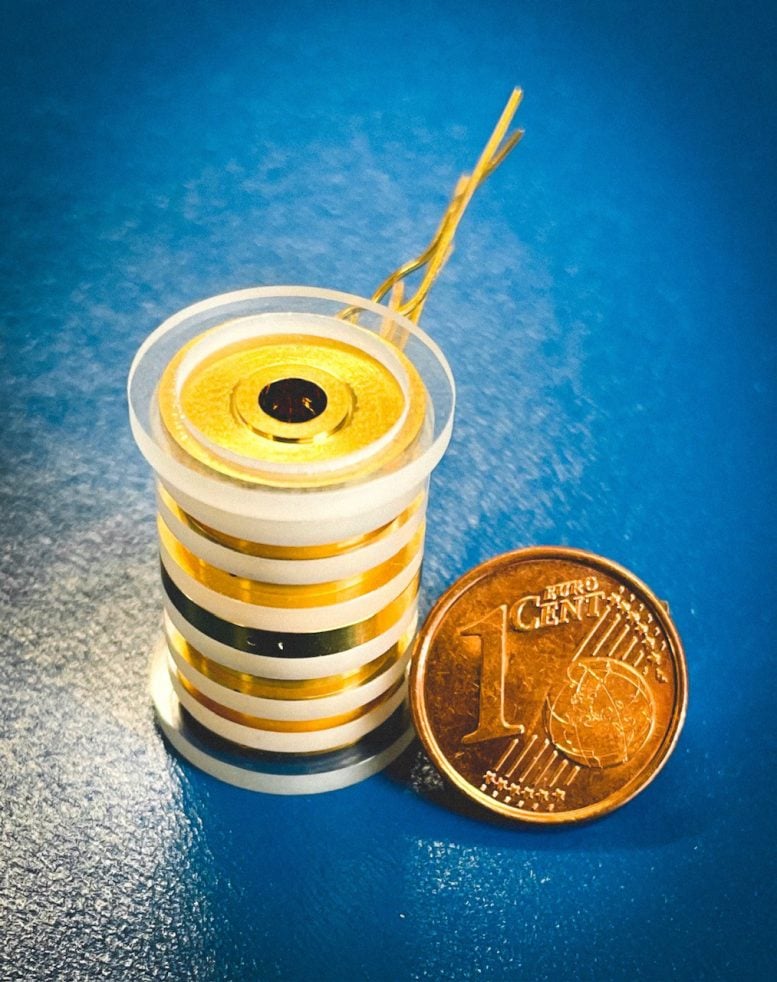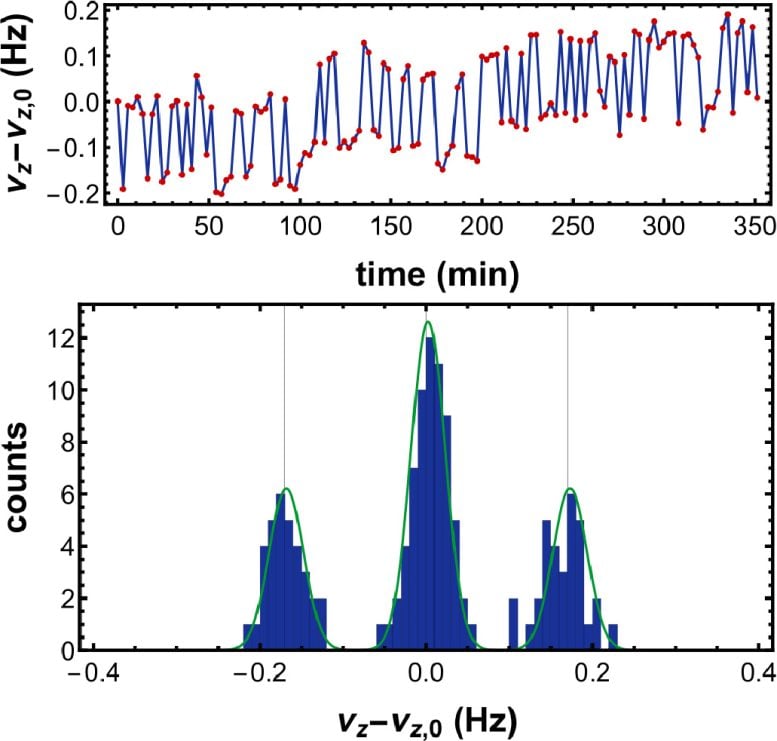
The BASE team at CERN has enhanced antiproton cooling techniques, allowing quicker and more precise measurements that challenge existing theories of matter-antimatter symmetry, potentially reshaping our understanding of the universe’s composition.
Why does the universe contain matter and virtually no antimatter? The BASE international research collaboration at the European Organisation for Nuclear Research (CERN) in Geneva, led by Professor Dr. Stefan Ulmer from Heinrich Heine University Düsseldorf (HHU), has made a significant experimental breakthrough in addressing this question. They have developed a method to measure the mass and magnetic moment of antiprotons with unprecedented precision, which may help uncover possible asymmetries between matter and antimatter. The team at BASE has designed a trap that can cool individual antiprotons much faster than previously possible, as reported in the scientific journal Physical Review Letters.
After the Big Bang more than 13 billion years ago, the universe was full of high-energy radiation, which constantly generated pairs of matter and antimatter particles such as protons and antiprotons. When such a pair collides, the particles are annihilated and converted into pure energy again. So, all in all, exactly the same quantities of matter and antimatter should be generated and annihilated again, meaning that the universe should be largely matterless as a consequence.

However, there is clearly an imbalance – an asymmetry – as material objects do exist. A minuscule amount more matter than antimatter has been generated – which contradicts the standard model of particle physics. Physicists have therefore been seeking to expand the standard model for decades. To this end, they also need extremely precise measurements of fundamental physical parameters.
The Role of the BASE Collaboration
This is the starting point for the BASE collaboration (“Baryon Antibaryon Symmetry Experiment”). It involves the universities in Düsseldorf, Hanover, Heidelberg, Mainz and Tokyo, the Swiss Federal Institute of Technology in Zurich and the research facilities at CERN in Geneva, the GSI Helmholtz Centre in Darmstadt, the Max Planck Institute for Nuclear Physics in Heidelberg, the National Metrology Institute of Germany (PTB) in Braunschweig and RIKEN in Wako/Japan.
“The central question we are seeking to answer is: Do matter particles and their corresponding antimatter particles weigh exactly the same and do they have exactly the same magnetic moments, or are there minuscule differences?” explains Professor Stefan Ulmer, spokesperson of BASE. He is a professor at the Institute for Experimental Physics at HHU and also conducts research at CERN and RIKEN.
The physicists want to take extremely high-resolution measurements of the so-called spin-flip – quantum transitions of the proton spin – for individual, ultra-cold, and thus extremely low-energy antiprotons; i.e. the change in orientation of the spin of the proton. “From the measured transition frequencies, we can, among other things, determine the magnetic moment of the antiprotons – their minute internal bar magnets, so to speak,” explains Ulmer, adding: “The aim is to see with an unprecedented level of accuracy whether these bar magnets in protons and antiprotons have the same strength.”

Preparing individual antiprotons for the measurements in a way that enables such levels of accuracy to be achieved is an extremely time-consuming experimental task. The BASE collaboration has now taken a decisive step forward in this regard.
Dr. Barbara Maria Latacz from CERN and lead author of the study that has now been published as an “editor’s suggestion” in Physical Review Letters, says: “We need antiprotons with a maximum temperature of 200 mK, i.e. extremely cold particles. This is the only way to differentiate between various spin quantum states. With previous techniques, it took 15 hours to cool antiprotons, which we obtained from the CERN accelerator complex, to this temperature. Our new cooling method shortens this period to eight minutes.”
The researchers achieved this by combining two so-called Penning traps into a single device, a “Maxwell’s daemon cooling double trap”. This trap makes it possible to prepare solely the coldest antiprotons on a targeted basis and use them for the subsequent spin-flip measurement; warmer particles are rejected. This eliminates the time needed to cool the warmer antiprotons.
The significantly shorter cooling time is needed to obtain the required measurement statistics in a significantly shorter period of time so that measuring uncertainties can be reduced further. Latacz: “We need at least 1,000 individual measurement cycles. With our new trap, we need a measurement time of around one month for this – compared with almost ten years using the old technique, which would be impossible to realize experimentally.”
Ulmer: “With the BASE trap, we have already been able to measure that the magnetic moments of protons and antiprotons differ by max. one billionth – we are talking about 10-9. We have been able to improve the error rate of the spin identification by more than a factor of 1,000. In the next measurement campaign, we are hoping to improve magnetic moment accuracy to 10-10.”
Professor Ulmer on plans for the future: “We want to construct a mobile particle trap, which we can use to transport antiprotons generated at CERN in Geneva to a new laboratory at HHU. This is set up in such a way that we can hope to improve the accuracy of measurements by at least a further factor of 10.”
Background: Traps for fundamental particles
Traps can store individual electrically charged fundamental particles, their antiparticles, or even atomic nuclei for long periods of time using magnetic and electric fields. Storage periods of over ten years are possible. Targeted particle measurements can then be made in the traps.
There are two basic types of construction: So-called Paul traps (developed by the German physicist Wolfgang Paul in the 1950s) use alternating electric fields to hold particles. The “Penning traps” developed by Hans G. Dehmelt use a homogeneous magnetic field and an electrostatic quadrupole field. Both physicists received the Nobel Prize for their developments in 1989.
Reference: “Orders of Magnitude Improved Cyclotron-Mode Cooling for Nondestructive Spin Quantum Transition Spectroscopy with Single Trapped Antiprotons” by BASE Collaboration, B. M. Latacz, M. Fleck, J. I. Jäger, G. Umbrazunas, B. P. Arndt, S. R. Erlewein, E. J. Wursten, J. A. Devlin, P. Micke, F. Abbass, D. Schweitzer, M. Wiesinger, C. Will, H. Yildiz, K. Blaum, Y. Matsuda, A. Mooser, C. Ospelkaus, C. Smorra, A. Soter, W. Quint, J. Walz, Y. Yamazaki and S. Ulmer, 1 August 2024, Physical Review Letters.
DOI: 10.1103/PhysRevLett.133.053201
14 Comments
The BASE team at CERN has enhanced antiproton cooling techniques, allowing quicker and more precise measurements that challenge existing theories of matter-antimatter symmetry, potentially reshaping our understanding of the universe’s composition.
RIDICULOUS!
Ask researchers to think deeply:
1. Why do we need matter and antimatter?
2. What is the basis for the formation and evolution of matter and antimatter?
3. Don’t matter and antimatter need time and space synchronization?
4. Is the so-called proton the most fundamental spatiotemporal structure?
5. Is what you observed in the experiment necessarily the most basic spatiotemporal structure?
6. If the so-called protons are composed of other particles, can they still be called protons and antiprotons?
7. Don’t researchers think this kind of article is extremely absurd and shameful?
and so on.
Based on the ideal fluid physical characteristics of space, topological phase transitions occur at any point in space to form vortices, which is not difficult to understand mathematically. Once a topological spacetime vortex is formed, it will continue to rotate until it interacts with other vortices to cancel out, annihilate, or change. This is the synchronous effect of topological vortices.
The rotation of topological vortices is spin. Spin generates gravitation. Spin generates energy. Spin generates evolution. Their interaction via synchronous effect is very interesting. Their superposition includes both logical superposition in space-time and factual superposition in reality. Their entanglement includes both surface entanglement and body entanglement. Their deflection methods are endless. In the interaction and balance of topological vortex fractal structures, spin creates everything in the world.
The universe does not make algebra, formulas, or fractions. The universe is a superposition, deflection, and entanglement of geometric shapes, is the interaction and balance of countless topological vortex fractal structures. In these interaction and balance, the past is difficult to change. For the future, some predictable, some unpredictable. But, the present moment is real, certain, and actionable. Physics should not ignore that low dimensional topological fractal structures are the material basis of high-dimensional spacetime.
Scientific research guided by correct theories can help humanity avoid detours, failures, and pomposity. Please witness the exemplary collaboration between theoretical physicists and experimentalists (https://scitechdaily.com/microscope-spacecrafts-most-precise-test-of-key-component-of-the-theory-of-general-relativity/#comment-854286). Some people in contemporary physics has always lived in a self righteous children’s story world. Whose values have been overturned by such a comical and ridiculous reality?
Misguided by the pseudo-scientific theory of Physical Review Letters (PRL), many researchers do not consider the similarities and differences between geometric shapes and physical reality in physics research, but indulge in imagination, and some scholars’ physics research seriously deviates from science, and they are almost unaware of the dirtiness and ugliness. Although mathematics is the language of science, it must be understood correctly.
I hope researchers are not fooled by the pseudoscientific theories of the Physical Review, and hope more people dare to stand up and fight against rampant pseudoscience.
The so-called academic journals (such as Physical Review Letters, Nature, Science, etc.) firmly believe that two high-dimensional spacetime objects (such as two sets of cobalt-60) rotating in opposite directions can be transformed into two objects that mirror each other, is a typical case of pseudoscience rampant.
Scientific research should be respected, but some people in contemporary physics are not. Please witness the actions of certain individuals and publications. If researchers are really interested in Science and Physics, you can browse https://zhuanlan.zhihu.com/p/643404671 and https://zhuanlan.zhihu.com/p/595280873.
The Physical Review journals, encompassing both hybrid and open-access journals, features 17 peer-reviewed publications including Physical Review Letters, Physical Review X, and Reviews of Modern Physics. CP violation was published in Physics Review in 1956. All so-called peer-reviewed publications of Physical Review family are responsible for clarifying this.
CP violation opened the dirtiest and ugliest era in the history of physics.
Why can’t you just accept the finding a move on, seems like you think your opinion has greater questions than answers, and all most seems you are trying to sell a different science journal. The top collaborations are here in this article what’s yours.
Each of my questions has a scientific answer based on topology. Every discovery in your experiment will never be precise, please answer and describe it in scientific language. The development of human science requires more people like you, but there must be scientific thinking to guide everyone’s behavior and way of thinking about questions.
Discoveries in scientific experiments are always superficial. The natural essence of things needs to be refined and elevated via mathematical theories. Once physics masters the natural essence of things, it can predict more possible natural phenomena and achieve them in a scientific way to the best of its ability.
Good luck to you.
Your post is a nonsensical hodgepodge of words.
Your questions show that you don’t understand the basics of physics, and you can’t stick to the point. Your first question asks why we “need” matter and antimatter. The universe doesn’t care about our needs – these things simply exist. Also, your question is not related to the article – if you doubt the existence of antimatter, then you need to respond to a different, and much older, paper.
Please describe and reflect on every discovery in scientific research using scientific language. The foundation of scientific language is mathematics.
The reason why humans are different from other animals is that they are good at using mathematics to think questions and correct mistakes. For example, why we (mathematics) “need” matter and antimatter?
Enjoy your every day.
If the natural essence described by mathematics is incorrect and mathematical models are not the foundation of science, mathematics should not be called the language of science.
Ask researchers to think deeply:
1. If mathematics is not the language of science, why does science need mathematics?
2. Which the 2D in mathematics and the so-called 2D you observed in scientific experiments are not affected by external factors?
and so on.
Mathematics is not the foundation of science, physics is. But mathematics and statistics are essential for quantifying and testing science.
Ironically you provide no quantification, only pseudoscience theories. Whose lack of success seems to have taught you to claim that successful science journals are ‘pseudoscience’ in some sort of self defense, as you can’t defend your irrelevant comments.
“Physical Review Letters (PRL), established in 1958, is a peer-reviewed, scientific journal that is published 52 times per year by the American Physical Society. As also confirmed by various measurement standards, which include the Journal Citation Reports impact factor and the journal h-index proposed by Google Scholar, many physicists and other scientists consider Physical Review Letters to be one of the most prestigious journals in the field of physics.[1][2][3]”
I’m fairly sure our responses will support your further non-scientific comments, but I’m also fairly certain that not responding may confuse some readers.
VERY GOOD.
Mathematics is not the foundation of science, physics is.
The physics you believe in is no different from God. Good luck to you.
I had an uncontrollable urge to laugh. Mathematics is not the foundation of science, your physics, Physical Review Letters (PRL) and your so-called peer-reviewed are.
I wonder if the Physical Review Letters (PRL) would agree with you?
Please. Get help.
Now this New experimental process is fantastic not less to mention the collaboration efforts, simply outstanding. My vision of the vastness of the quantum in the workings of the vastness of the universe can be calculated the number maybe so enormous that to put a digit to paper or a computer could be a challenge in itself.
The article is overly sensational. Generating a minuscule amount more matter than antimatter neither contradicts nor challenge the standard model of particle physics. The early universe had and the standard model has the requisite properties to do that according to the Sakharov conditions – baryon number B violation, C-symmetry and CP-symmetry violation, interactions out of thermal equilibrium – only not observed in the requisite proportions for all of them. The early expanding universe was out of thermal equilibrium, and it helped baryon numbers conservation to be broken by high energy, non-perturbative (non particle) processes. [“Baryogenesis”, Wikipedia]
But the observed C/CP breaking is too small in the baryon sector (thus far). On the other hand, since neutrinos has masses and observed to have large C/CP-breakings (thus far), they are candidates for mediating baryogenesis. [“Leptogenesis”, Wikipedia]
I admire your courage and backbone. However, you have been fooled by pseudoscience and are deeply immersed in it.
Scientific theories and discoveries in scientific experiments are two different concepts, one is the natural essence of things, and the other is the appearance of things. The natural essence of things needs to be extracted and sublimated via mathematical theory through appearances.
Once physics masters the essence of nature, it can predict possible natural phenomena and apply scientific methods toachieve or verify them.
From cosmic accretion disks to microscopic particle spins, topological vortex fractal structures are ubiquitous. Exploring and understanding new particles and forces is not impossible via the interaction and balance of topological vortex fractal structures.